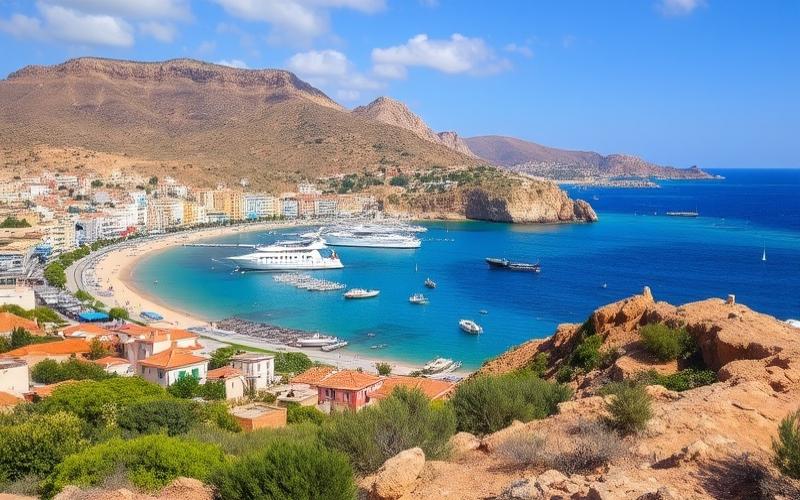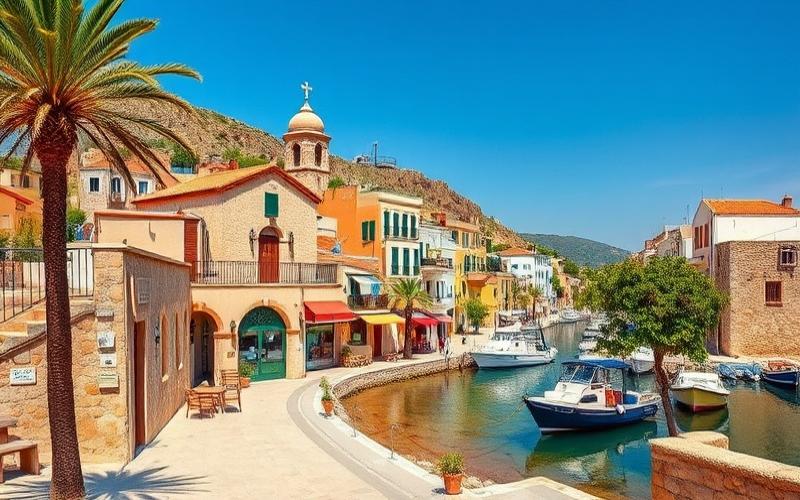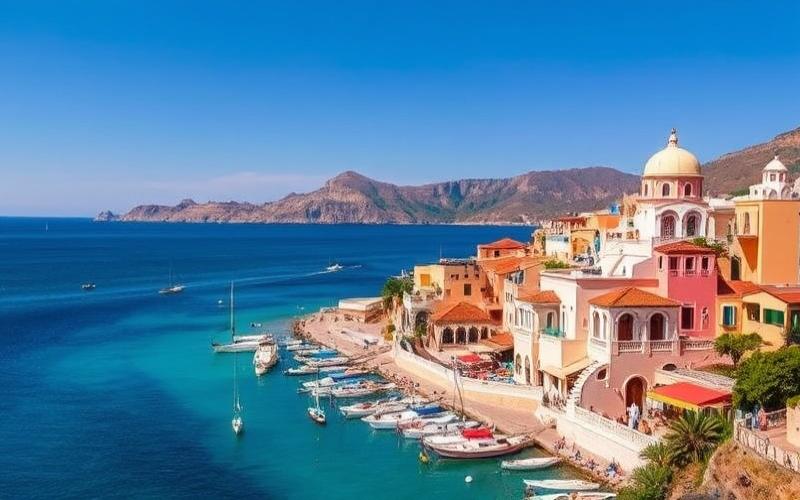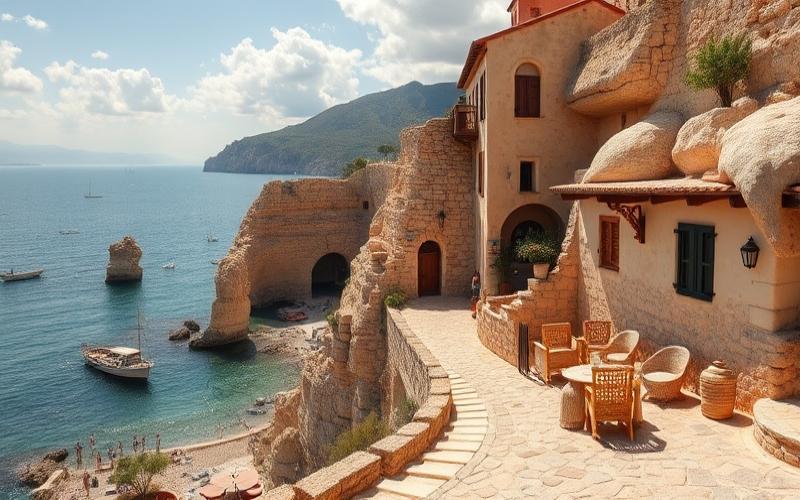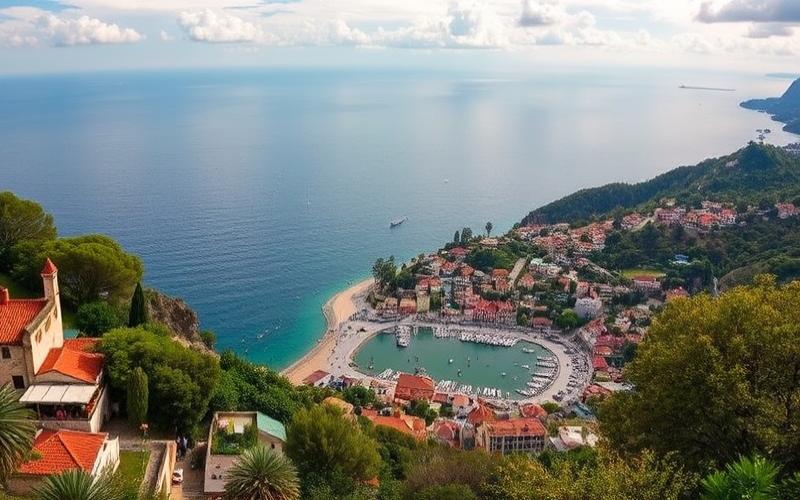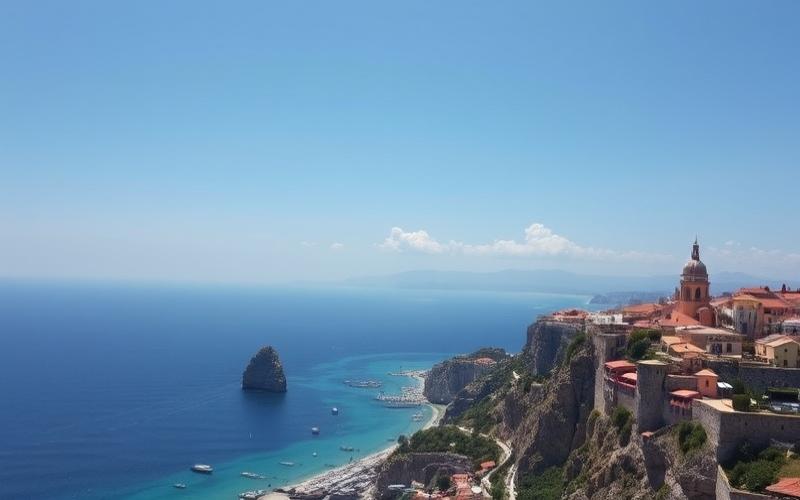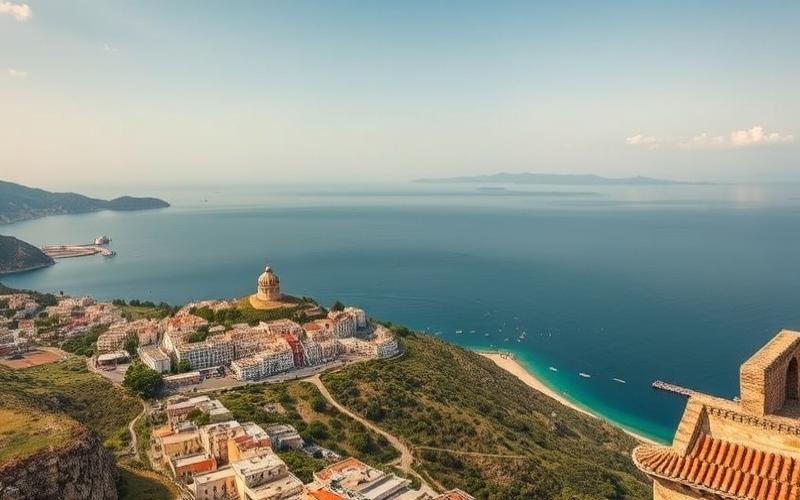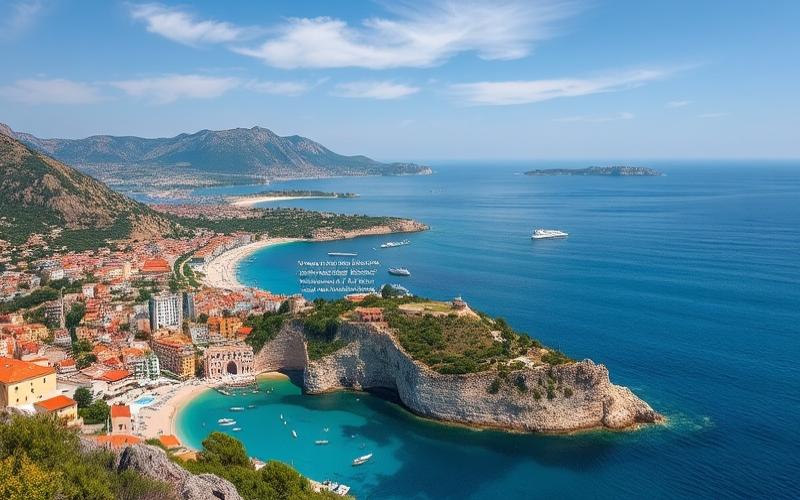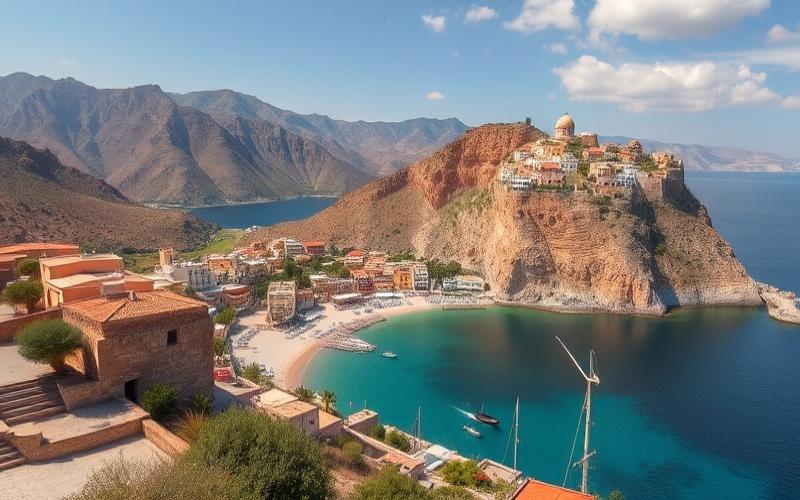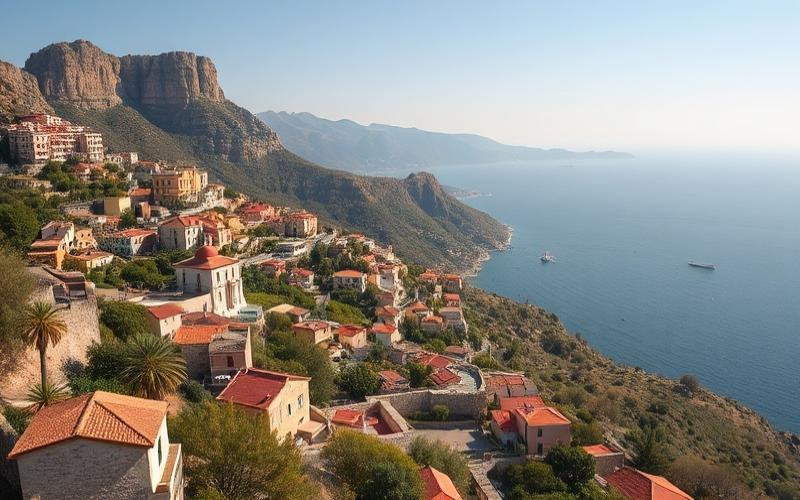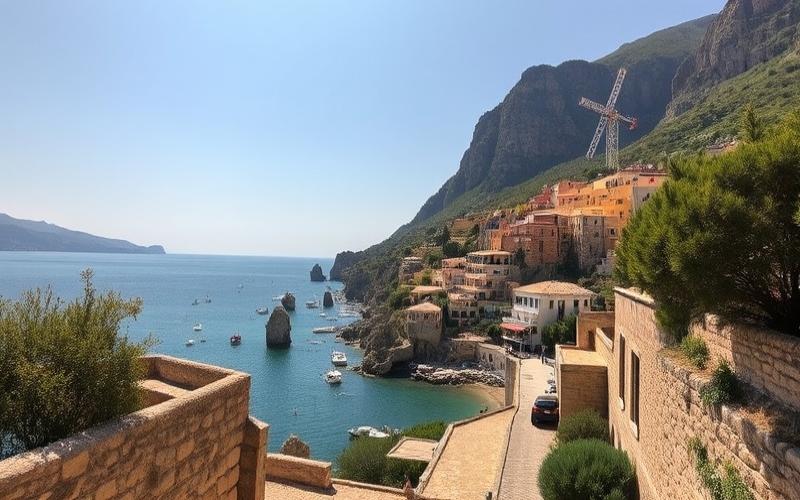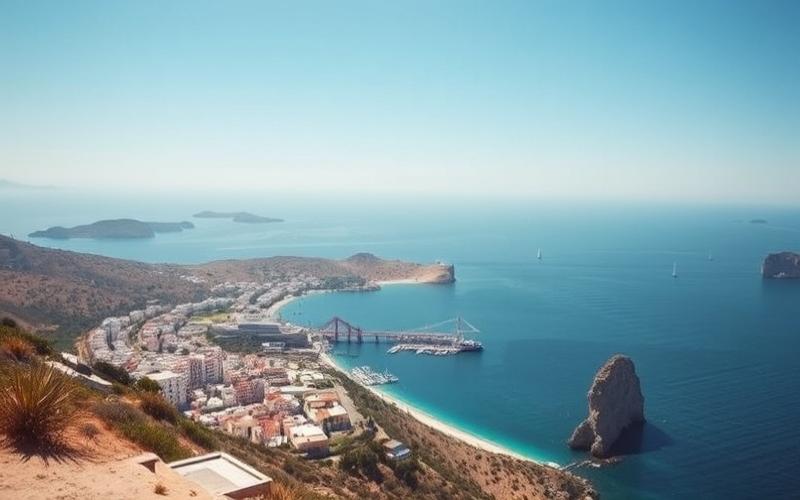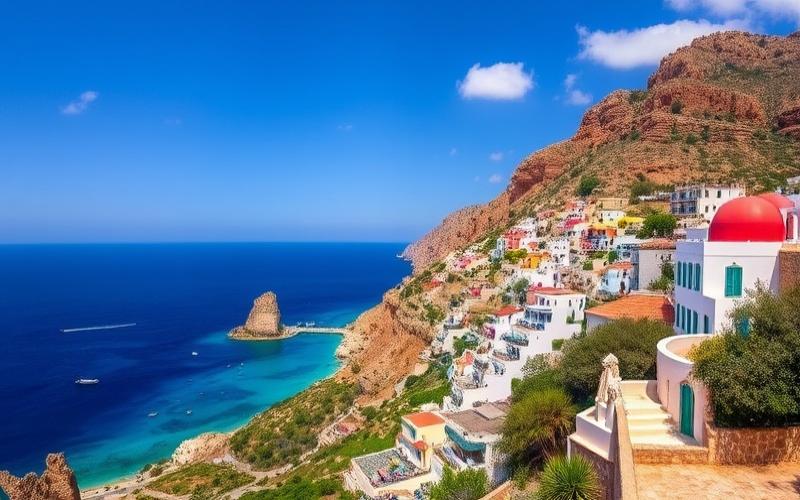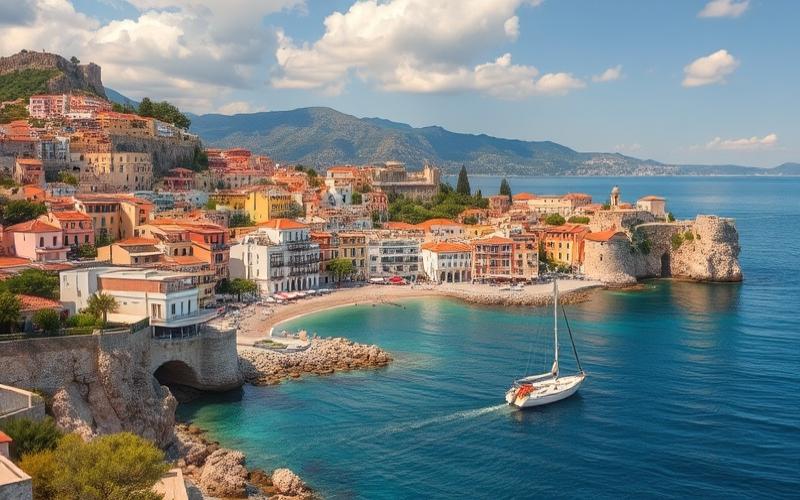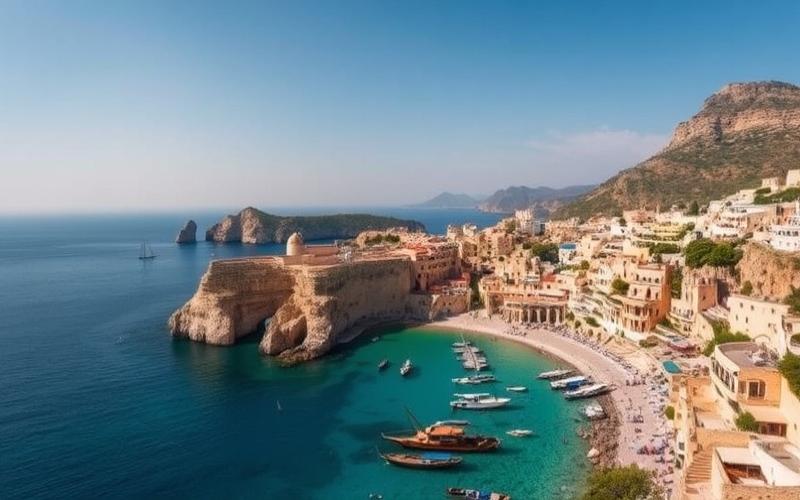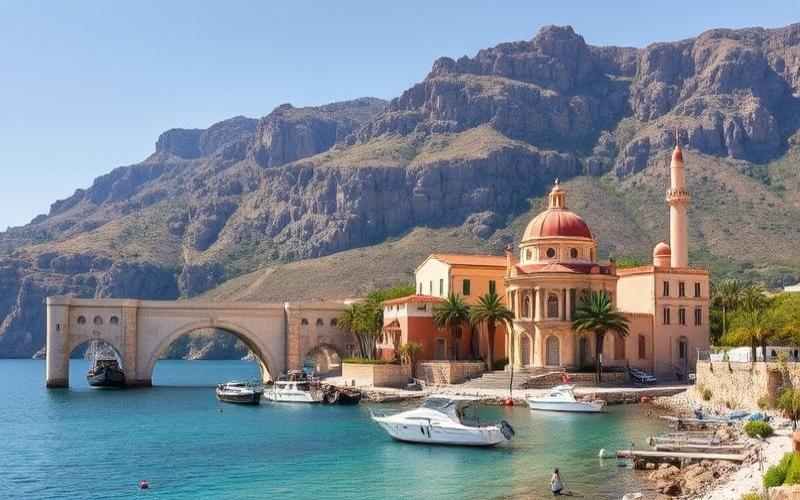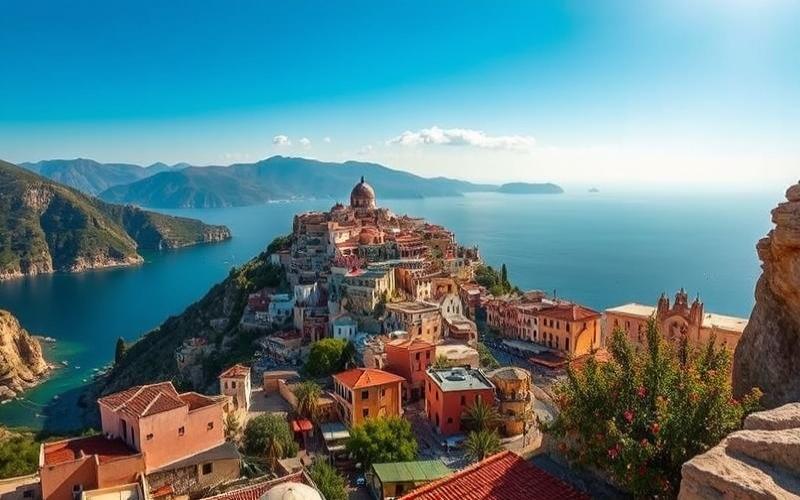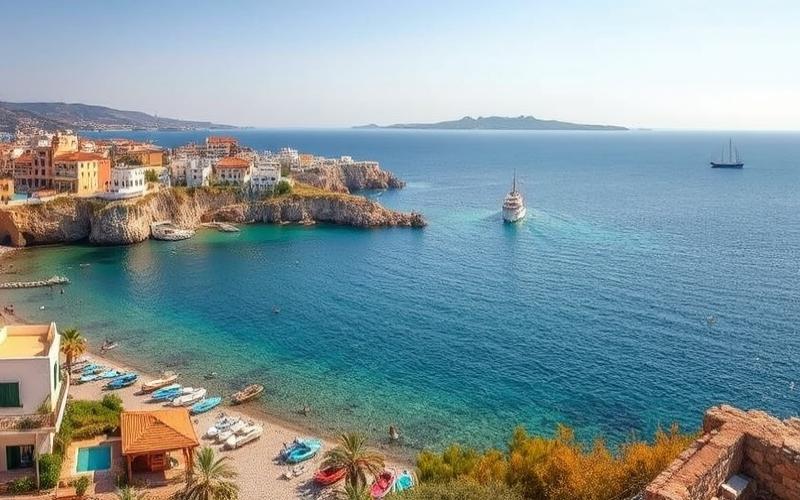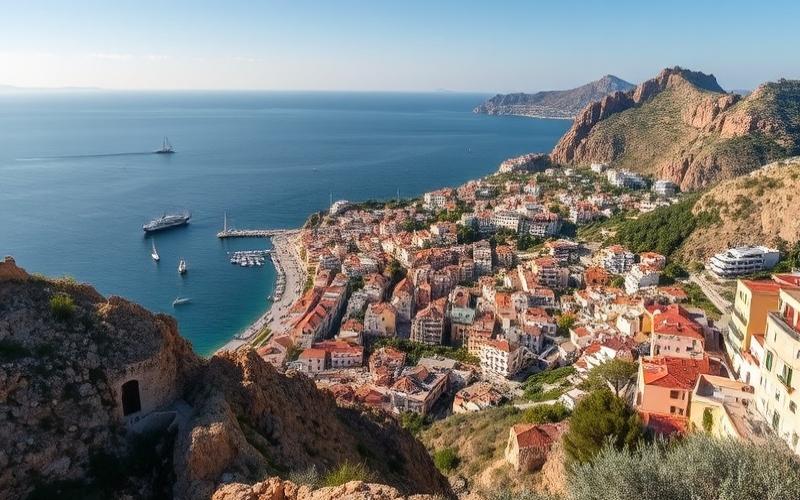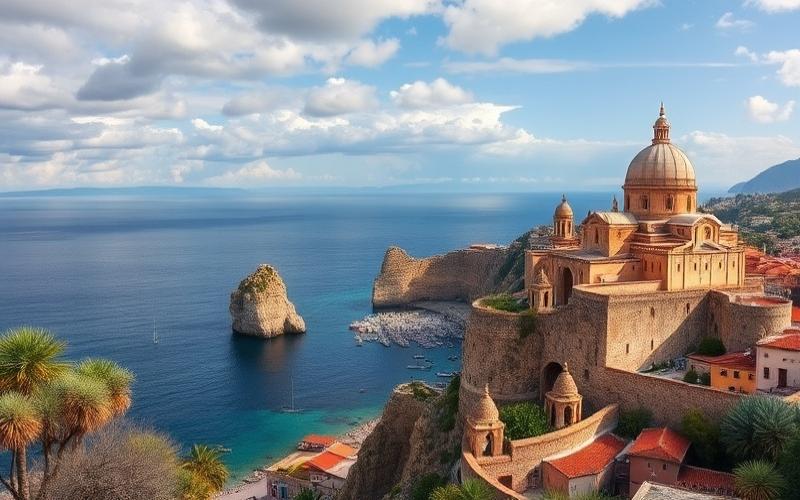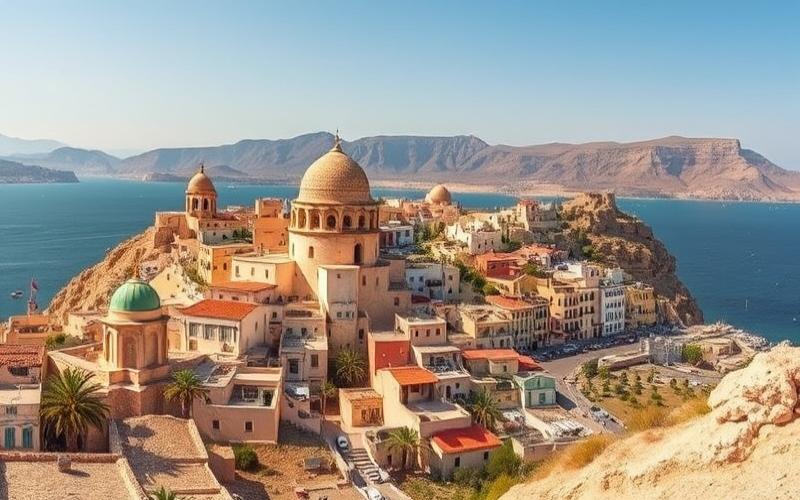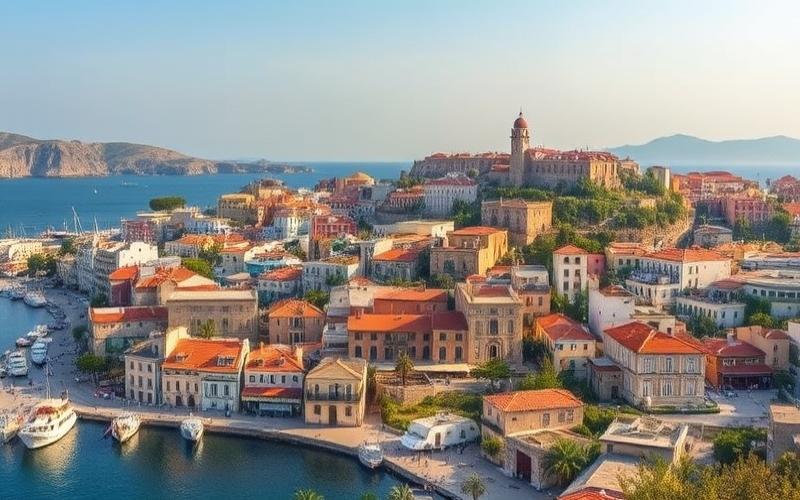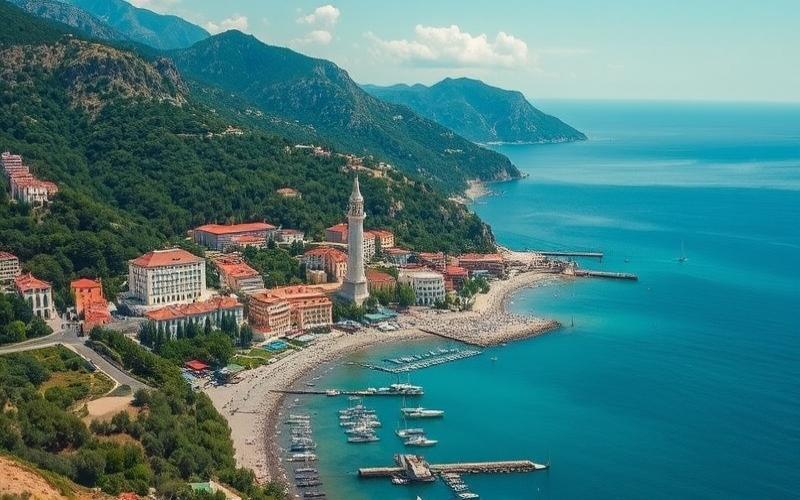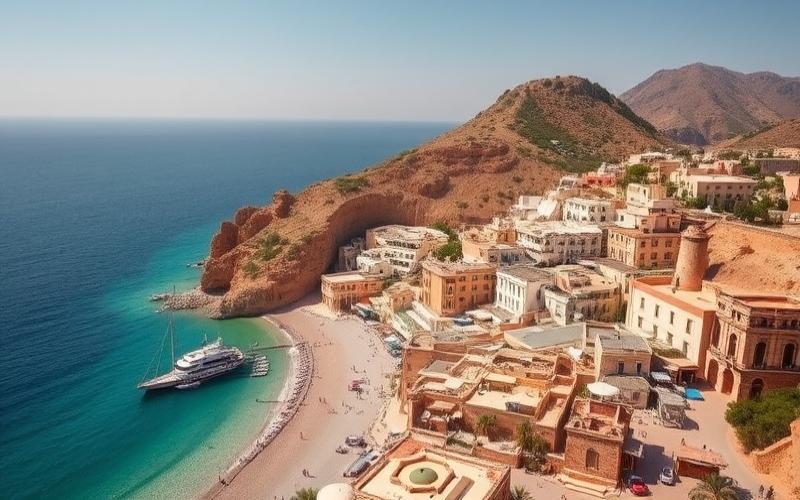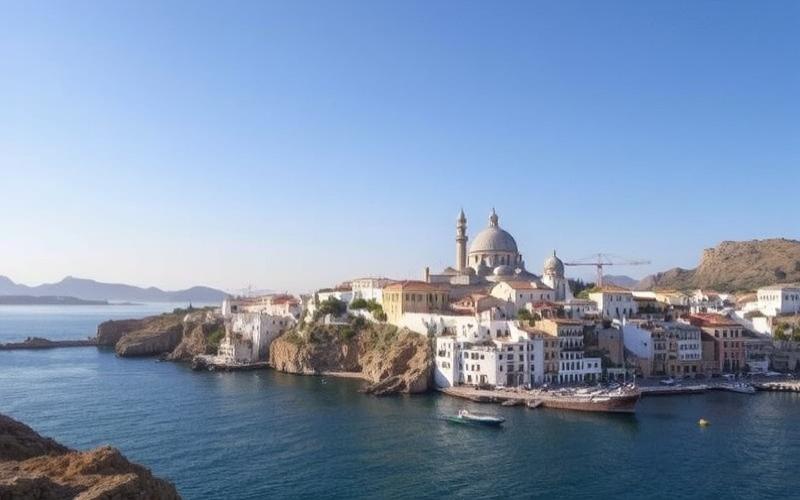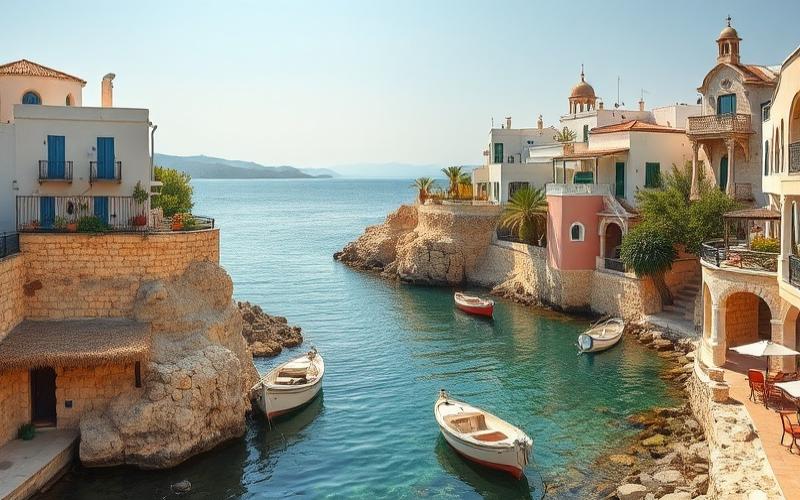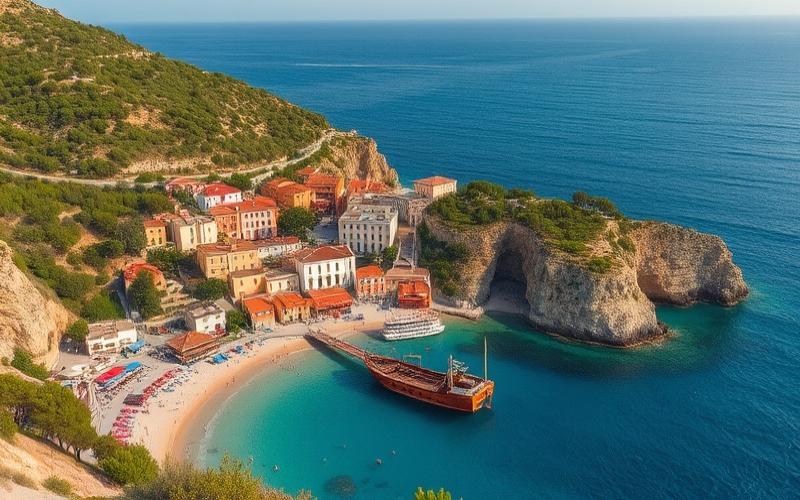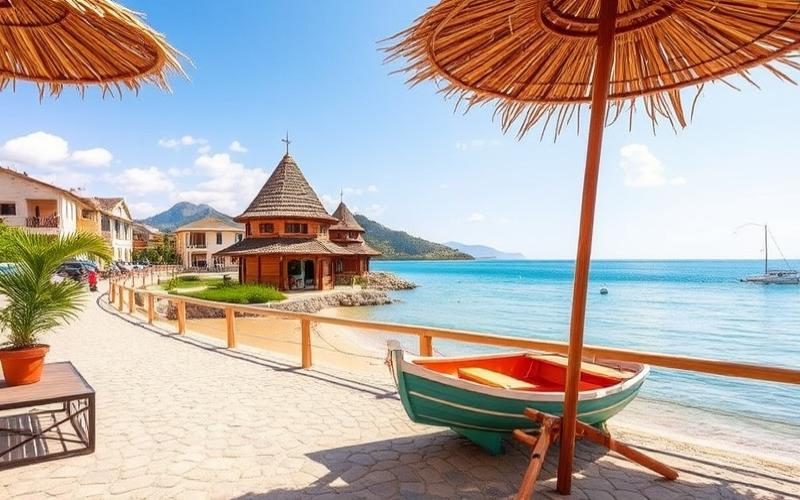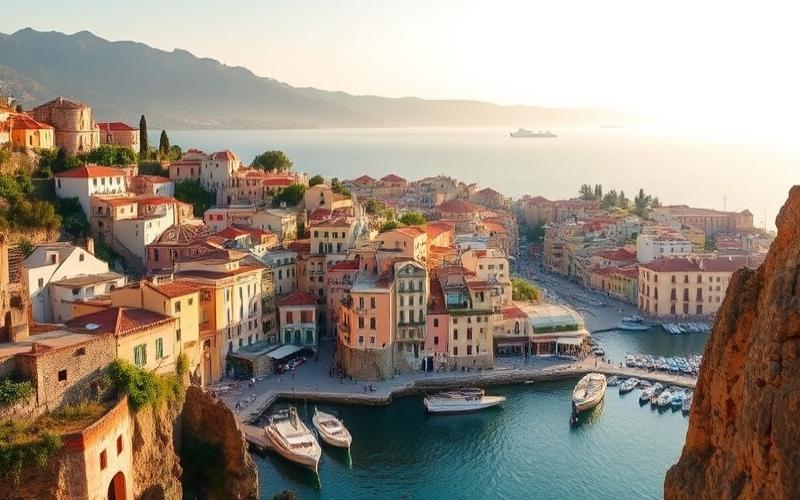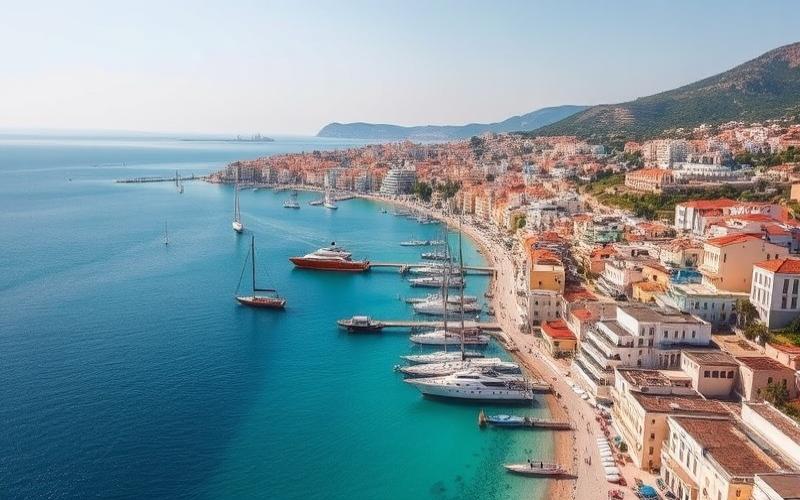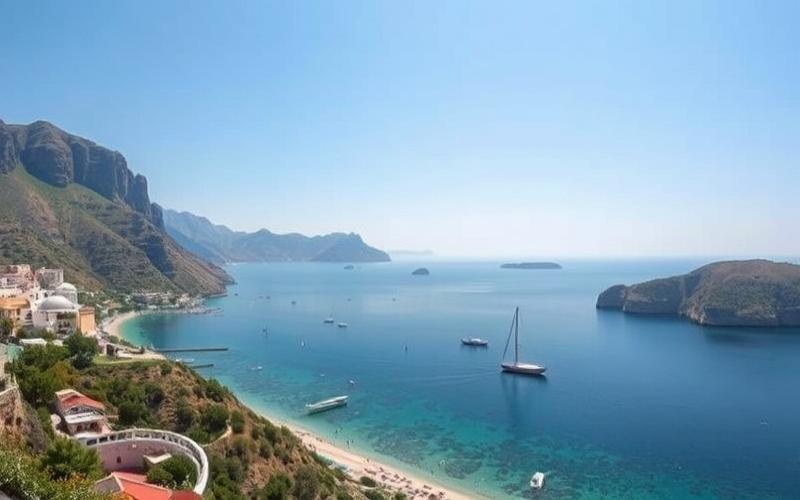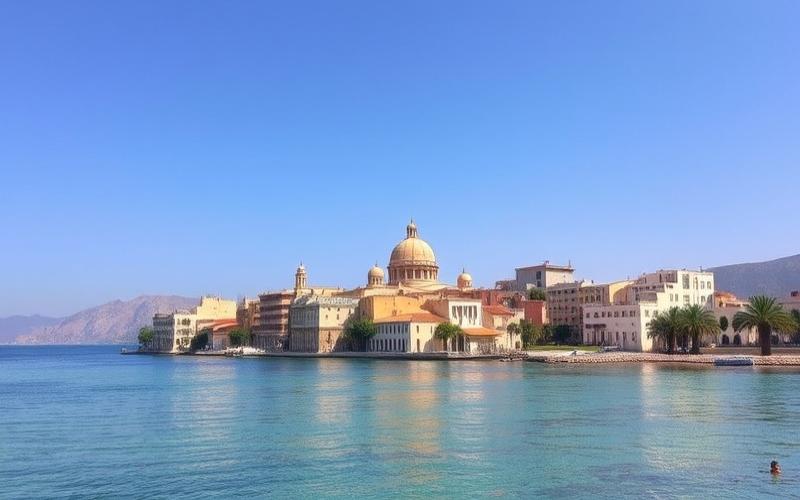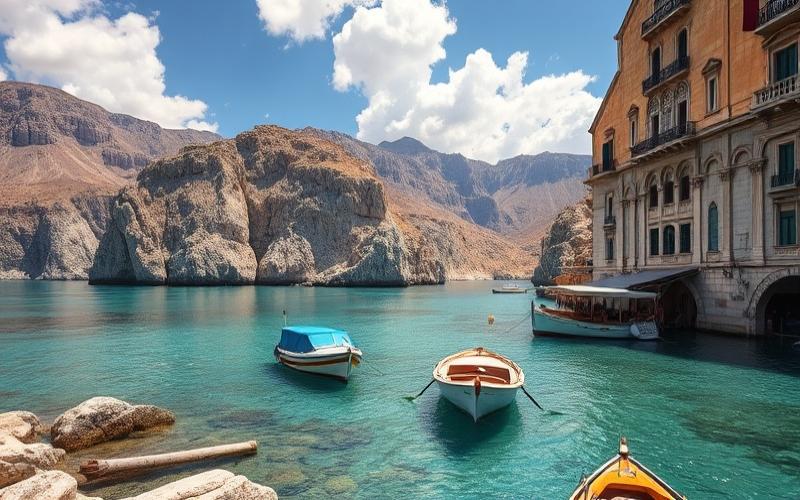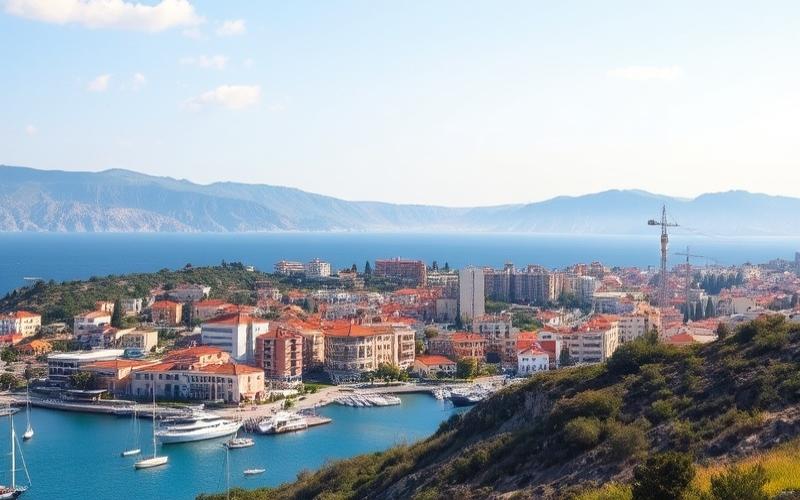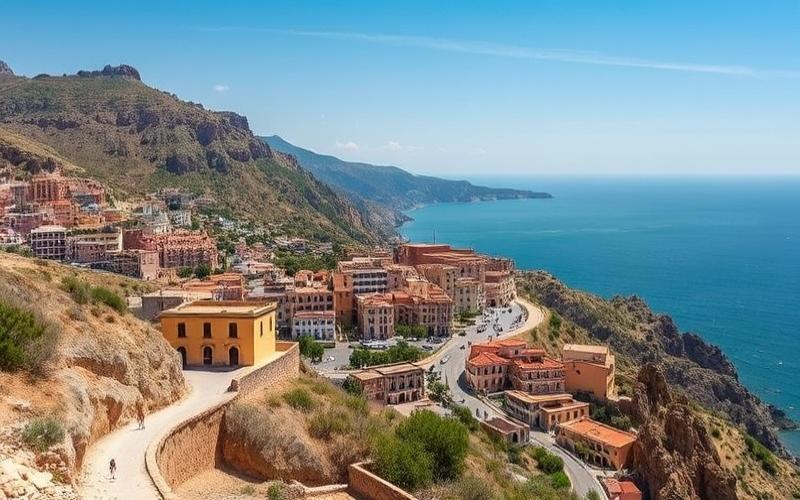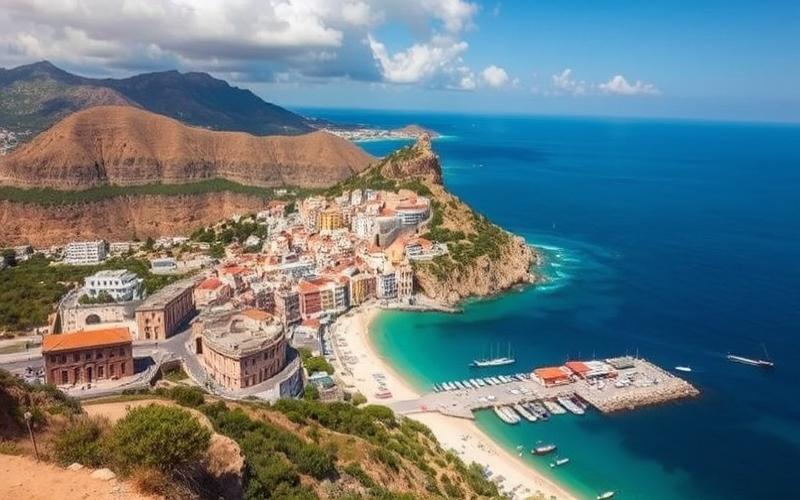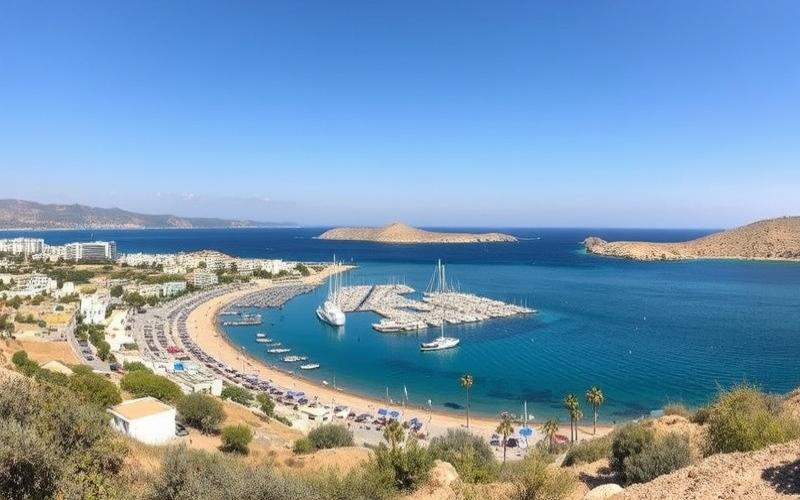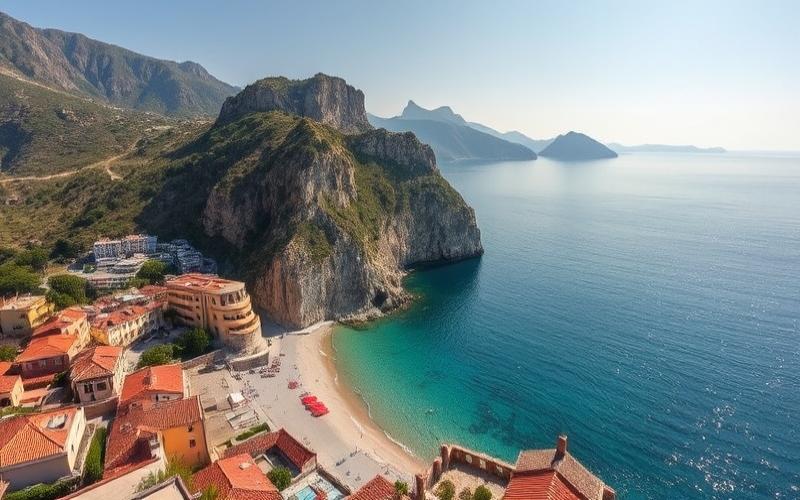
 Published on and written by Cyril Jarnias
Published on and written by Cyril Jarnias
Cyprus, the jewel of the Mediterranean, attracts millions of visitors each year who are drawn to its golden sandy beaches, sunny climate, and rich historical heritage. This growing tourist influx has a significant impact on the island’s real estate market, creating unique opportunities for savvy investors. Let’s dive into the details of this fascinating synergy between tourism and real estate in Cyprus, and discover how it’s shaping the economic future of this sought-after destination.
Tourist Hotspots: Drivers of Real Estate Growth
Tourism in Cyprus isn’t confined to a few isolated areas; it flows throughout the entire island, creating various attraction hubs that stimulate the local real estate market. Among the most sought-after regions are:
Paphos, a coastal city on the island’s west coast, blends historical charm with modernity. Its picturesque harbor, UNESCO World Heritage archaeological sites, and dream beaches make it a prime destination for tourists seeking authenticity and relaxation. This popularity is directly reflected in the local real estate market, with growing demand for waterfront properties and luxury residences.
Limassol, Cyprus’s second-largest city, stands out for its economic dynamism and cosmopolitan character. Its rapidly developing coastline, dotted with high-end hotel complexes and ultramodern marinas, attracts wealthy international clientele. Real estate investors find fertile ground for ambitious projects here, ranging from upscale apartments to luxury villas with sea views.
Ayia Napa, known for its vibrant nightlife and paradise beaches, is undergoing a gradual transformation. While remaining the premier destination for young party-goers, the town is also developing more family-friendly and high-end offerings. This diversification is reflected in the emergence of new real estate projects, ranging from secure residences to all-inclusive resort complexes.
The appeal of these tourist areas remains strong, as evidenced by recent Cypriot tourism figures. In 2024, the island welcomed over 4 million visitors, a record that directly impacted the real estate sector. Coastal areas, in particular, saw demand for properties increase by 15% compared to the previous year, highlighting the close link between tourist influx and real estate market vitality.
Good to Know:
The regions of Paphos, Limassol, and Ayia Napa are the engines of real estate growth in Cyprus, directly benefiting from the tourist influx. These areas offer attractive investment potential, with sustained demand for quality properties.
Soaring Prices: When Tourism Reshapes the Real Estate Landscape
The tourist enthusiasm for Cyprus has a direct and significant impact on real estate prices. This upward trend, observed for several years, has recently intensified, reshaping the island’s real estate landscape.
In sought-after tourist areas, price pressure is particularly strong. In Limassol, for example, the average price per square meter for a waterfront apartment increased by 25% between 2023 and 2025, now reaching €4,500. This spectacular rise is explained by a combination of factors: the scarcity of available waterfront land, the increasing quality of construction, and of course, sustained demand from foreign investors and tourists seeking second homes.
In Paphos, although less pronounced, the trend is similar. Properties located near historical sites or offering breathtaking sea views saw their value climb by 15% over the same period. The average price per square meter there now ranges between €2,500 and €3,500, depending on location and amenities offered.
This price inflation is not without consequences for the local market. While it represents an opportunity for investors and existing property owners, it also poses challenges in terms of housing accessibility for the local population. Cypriot authorities are aware of this issue and are considering measures to balance the market, such as introducing quotas for foreign purchases in certain areas or implementing affordable housing programs.
Nevertheless, it’s important to note that this price increase is not uniform across the entire island. Less touristy inland regions still offer investment opportunities at more moderate prices, with interesting growth potential in the medium term.
The evolution of real estate prices in Cyprus also reflects trends in the tourist market. Thus, there is growing demand for luxury properties, in line with the development of high-end tourism on the island. Villas with private pools, penthouses with panoramic sea views, or residences integrated into complexes offering hotel services are particularly sought after. These exceptional properties can reach dizzying prices, sometimes exceeding €10,000 per square meter in the most sought-after locations in Limassol or Paphos.
Good to Know:
The rise in real estate prices in Cyprus is particularly marked in sought-after tourist areas, with increases of up to 25% in two years in some regions. This trend offers interesting opportunities for investors but also poses challenges in terms of housing accessibility for the local population.
The Rental Investment Boom: Capitalizing on Tourist Appeal
The tourism boom in Cyprus has paved the way for a true rental investment boom. Property owners and investors, aware of the profitability potential offered by seasonal rentals, are increasingly turning to this economic model. This trend is transforming not only the island’s real estate landscape but also how visitors experience their stay in Cyprus.
Seasonal rental, an expanding market
The numbers speak for themselves: in 2024, the number of properties listed on short-term rental platforms in Cyprus increased by 30% compared to the previous year. This rapid growth is explained by several factors:
- Attractive profitability: owners can expect annual returns ranging from 6% to 8% in the most sought-after tourist areas, compared to 3% to 4% for traditional long-term rentals.
- Flexibility: the ability to adjust rental periods allows owners to enjoy their property themselves for part of the year.
- Evolving traveler preferences: more and more tourists prefer vacation rentals to traditional hotels, seeking a more authentic and personalized experience.
The most attractive areas for rental investment
Certain regions of Cyprus stand out particularly in terms of rental potential:
- Paphos: with its unique blend of history and modernity, the city attracts diverse clientele throughout the year. Apartments with sea views and villas near archaeological sites are particularly sought after.
- Ayia Napa: despite its reputation as a party destination, the town is attracting more and more families seeking paradise beaches. Properties located near Nissi Beach or Makronissos Beach are in high demand.
- Protaras: this family beach resort is growing in popularity. Villas with private pools and seaside apartments show high occupancy rates during the summer season.
Challenges of rental investment
Despite its attractiveness, rental investment in Cyprus is not without challenges. Owners must face increased competition, requiring particular attention to the quality of services offered and the management of their property. Moreover, the seasonality of tourism in certain regions can impact profitability, with off-peak periods to manage.
Cypriot authorities, aware of the impact of this phenomenon on the local housing market, have recently introduced new regulations. Since 2024, owners wishing to offer their property for short-term rental must obtain a specific license and comply with certain quality and safety standards. This measure aims to professionalize the sector and guarantee a quality experience for visitors.
Future prospects
Despite these challenges, prospects for rental investment in Cyprus remain very positive. The Cypriot government has announced its ambition to develop more sustainable and quality tourism, which should support demand for upscale accommodations. Moreover, the extension of the tourist season, thanks to the promotion of off-season activities like golf or cultural tourism, offers opportunities to make investments profitable over a longer period of the year.
Good to Know:
Rental investment in Cyprus is experiencing a real boom, driven by tourism growth and evolving traveler preferences. With potential returns of up to 8% in the most sought-after areas, this sector offers attractive opportunities for investors, despite challenges related to competition and increasing regulation.
Urban Landscape Evolution: When Tourism Shapes Cities
The influence of tourism on Cyprus’s real estate market is not limited to prices and available property types alone. It is profoundly transforming the urban landscape of the island’s main tourist cities, creating new neighborhoods, modifying existing infrastructure, and redefining the very identity of these urban spaces.
The verticalization of coastal cities
One of the most visible transformations concerns the skyline of coastal cities. In Limassol, for example, the waterfront has been transformed in barely a decade. Older low-rise buildings have gradually given way to ultramodern skyscrapers, responding to growing demand for luxury apartments with sea views. This verticalization is not without raising debates among the local population, with some fearing a loss of the city’s identity.
The “Limassol Del Mar,” a luxury residential complex completed in 2023, perfectly illustrates this trend. With its two 27-story towers offering high-end apartments and penthouses, it has become a symbol of the new Limassol, attracting wealthy international clientele.
The creation of new neighborhoods dedicated to tourism
In several island cities, we are witnessing the emergence of entire neighborhoods specifically designed to meet the needs of luxury tourism. These spaces, often developed on former industrial wastelands or undervalued land, combine high-end residences, luxury hotels, marinas, and shopping centers.
The “Ayia Napa Marina” project, launched in 2022, is a perfect example. This €300 million complex includes two luxury residential towers, a marina capable of accommodating large yachts, as well as commercial and leisure spaces. It has literally created a new neighborhood in the town, attracting international clientele and redefining Ayia Napa’s image, once primarily known for its vibrant nightlife.
The rehabilitation of historic centers
Alongside these modern developments, there is renewed interest in the historic centers of Cypriot cities. In Paphos, for example, significant renovation work has been undertaken in the old town, transforming old traditional houses into boutique hotels or charming residences. This trend responds to growing demand for more authentic and cultural tourism.
The Kato Paphos neighborhood, with its picturesque alleys and numerous archaeological sites, has thus experienced a true renaissance. Real estate investors have renovated many properties there, creating a harmonious blend between historical heritage and modern comfort.
Infrastructure adaptation
The tourist influx and accompanying real estate development have also necessitated adaptation of urban infrastructure. Cities have had to invest heavily in improving road networks, extending water and electricity supply systems, and creating new wastewater treatment facilities.
In Larnaca, for example, the waterfront redevelopment project, estimated at €1.2 billion, includes not only the construction of new hotels and residences but also the creation of green spaces, bike paths, and improvement of public infrastructure. This type of integrated development aims to meet tourist needs while improving the quality of life for local residents.
Challenges of this urban transformation
This rapid evolution of the urban landscape is not without challenges. Cypriot authorities must ensure a balance between tourist development and the quality of life of permanent residents. Questions are being raised particularly about the environmental sustainability of some large-scale real estate projects, as well as their impact on water resources, already limited on the island.
Moreover, the gentrification of certain neighborhoods, driven by tourist appeal, raises concerns about housing accessibility for the local population. Authorities are considering measures to regulate this phenomenon, such as introducing affordable housing quotas in new real estate projects.
Good to Know:
Tourism is profoundly transforming Cyprus’s urban landscape, with the emergence of new luxury neighborhoods, the verticalization of coastal cities, and the rehabilitation of historic centers. This evolution, while offering many opportunities, also poses challenges in terms of preserving local identity and balancing the needs of tourists with those of permanent residents.
Future Prospects: Toward a Sustainable Balance Between Tourism and Real Estate
The future of the Cypriot real estate market is intrinsically linked to the evolution of the island’s tourism sector. As Cyprus continues to establish itself as a premier Mediterranean destination, it’s crucial to anticipate future trends and consider harmonious and sustainable development.
Diversification of tourist and real estate offerings
Cypriot authorities have clearly expressed their intention to diversify the island’s tourist offerings, focusing on higher value-added segments. This strategy is directly reflected in real estate market orientations:
- Development of health and wellness tourism: There is an increase in real estate projects incorporating spas, thalassotherapy centers, or state-of-the-art medical clinics. The “Eden City” complex in Paphos, scheduled for completion in 2026, perfectly illustrates this trend with its world-class medical center and residences adapted for long medical stays.
- Growth of sports tourism: Investments in high-level sports infrastructure, such as golf courses or training centers for athletes, are accompanied by related real estate developments. The “Limassol Greens Golf Resort” project, which combines an 18-hole golf course with luxury villas and apartments, is a perfect example.
- Business tourism: Major cities like Limassol and Nicosia are seeing the emergence of mixed projects combining office spaces, conference rooms, and high-end accommodations, responding to growing demand for business tourism and professional events.
Toward more sustainable development
Growing awareness of environmental issues is increasingly influencing the Cypriot real estate sector. Future developments will need to incorporate stricter sustainability standards:
- Energy efficiency: New constructions are increasingly designed to optimize energy consumption, using high-performance insulating materials and integrating renewable energy systems.
- Water management: In a context of scarce water resources, real estate projects are innovating in wastewater recovery and recycling.
- Preservation of natural spaces: Authorities are imposing stricter restrictions on development in sensitive coastal areas, favoring the rehabilitation of existing sites rather than expansion on virgin land.
The “Ayia Napa Eco-Village” project, whose construction began in 2024, illustrates this trend toward more sustainable development. This residential and tourist complex aims for carbon neutrality, with energy-positive buildings and an innovative waste and water management system.
Adaptation to new work trends
The COVID-19 pandemic accelerated the remote work trend, opening new perspectives for the Cypriot real estate market. The island is now positioning itself as an attractive destination for “digital nomads” and international teleworkers:
- Development of residences with integrated coworking spaces
- Offer of more flexible long-term rentals, adapted to stays of several months
- Improvement of telecommunication infrastructure, with 5G deployment planned across the entire island by 2026
Market regulation and oversight
Faced with challenges posed by the rapid development of the tourism-related real estate sector, Cypriot authorities are considering new regulatory measures:
- Strengthening controls on foreign real estate investments to prevent money laundering risks
- Introduction of quotas for secondary residences in certain areas to preserve housing access for the local population
- Implementation of tax incentives to encourage renovation of existing buildings rather than new construction
Challenges to overcome
Despite these promising prospects, the Cypriot real estate sector will have to overcome several challenges in the coming years:
- Balancing tourist development with the local population’s need for affordable housing
- Managing pressure on natural resources, particularly water, in a context of climate change
- Maintaining Cyprus’s attractiveness in the face of growing competition from other Mediterranean destinations
- Adapting the regulatory framework to encourage sustainable and responsible real estate development
Good to Know:
The future of the Cypriot real estate market is moving toward diversification of offerings, more sustainable development, and adaptation to new work trends. Authorities will have to meet the challenge of reconciling economic growth, environmental preservation, and quality of life for local residents to ensure harmonious and sustainable sector development.
In conclusion, the impact of tourism on the real estate market in Cyprus is undeniable and multifaceted. From soaring prices in sought-after tourist areas to the transformation of the urban landscape, through the rental investment boom, the Cypriot real estate sector is undergoing significant change. Future prospects are promising, with an orientation toward more sustainable and diversified development, but they also come with important challenges to overcome.
For savvy investors, Cyprus offers unique opportunities in a dynamic and constantly evolving market. However, thorough knowledge of local specifics and a long-term vision are essential to fully capitalize on this potential.
Disclaimer: The information provided on this website is for informational purposes only and does not constitute financial, legal, or professional advice. We encourage you to consult qualified experts before making any investment, real estate, or expatriation decisions. Although we strive to maintain up-to-date and accurate information, we do not guarantee the completeness, accuracy, or timeliness of the proposed content. As investment and expatriation involve risks, we disclaim any liability for potential losses or damages arising from the use of this site. Your use of this site confirms your acceptance of these terms and your understanding of the associated risks.

